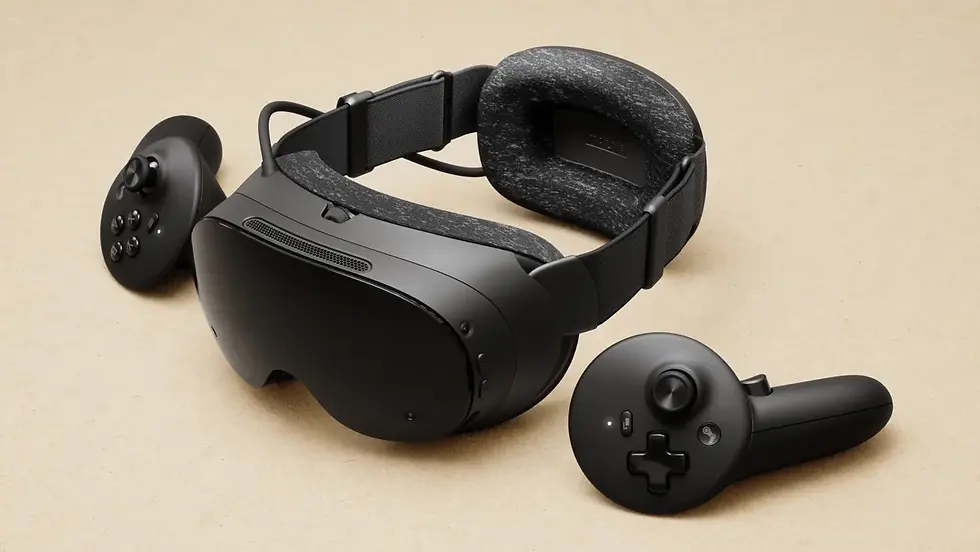Valve Steam Frame: The Next Leap in Standalone VR for 2026
- Eddie Avil

- 2 days ago
- 2 min read

Valve is making a significant return to the VR hardware scene with its upcoming Steam Frame headset, slated for an early 2026 release. Marking their first major VR launch since the acclaimed 2019 Valve Index, the Steam Frame pushes beyond incremental upgrades with ambitious hardware and software innovations.
At the heart of the Steam Frame is a Qualcomm Snapdragon 8 Gen 3 processor coupled with 16GB LPDDR5X RAM, delivering powerful performance for a standalone device. It employs dual LCD panels with 2160 × 2160 resolution per eye, which doubles the pixel density seen in the Valve Index. The refresh rate is adjustable from 72Hz to 120Hz with an experimental 144Hz mode, promising smooth visuals and enhanced clarity aided by so-called “pancake” optics. The field of view reaches up to 110 degrees.
Storage options include models with 256GB or 1TB capacity, plus a microSD slot to switch content easily, especially between Valve’s Steam Machine or Steam Deck. The operating system builds on SteamOS, incorporating a Proton compatibility enhancement called Fex, which enables playing traditional Windows x86 VR desktop titles on the Linux-based headset — a notable feat for interoperability. Users can also sideload mobile VR apps, broadening the content ecosystem.
Weighing in at just 440 grams, the Steam Frame stands as one of the lightest standalone VR headsets available. Valve has embraced modding and customization, providing CAD and electrical specifications so users can customize or 3D-print replacement parts like face interfaces and head straps.
The controllers maintain a familiar layout but pack advanced features like two-stage grips for nuanced input and onboard IMUs supplemented by 18 infrared LEDs for precise hand tracking via headset sensors. Streaming games from a PC or Steam Machine is supported through a dedicated 6 GHz wireless dongle, with fluid gameplay demonstrated in popular titles like Half-Life Alyx. In addition, 2D non-VR games can run inside the headset on a massive virtual screen.
While exact pricing remains undisclosed, early impressions applaud Valve’s execution, especially the seamless PC streaming experience. The Steam Frame is positioned to compete strongly in the high-end standalone VR market, potentially outperforming competitors like Meta Quest 3 in GPU performance.
Valve’s latest offering represents a notable technological leap and a thoughtful ecosystem approach that caters to enthusiasts and gamers seeking both standalone freedom and PC compatibility.





Comments